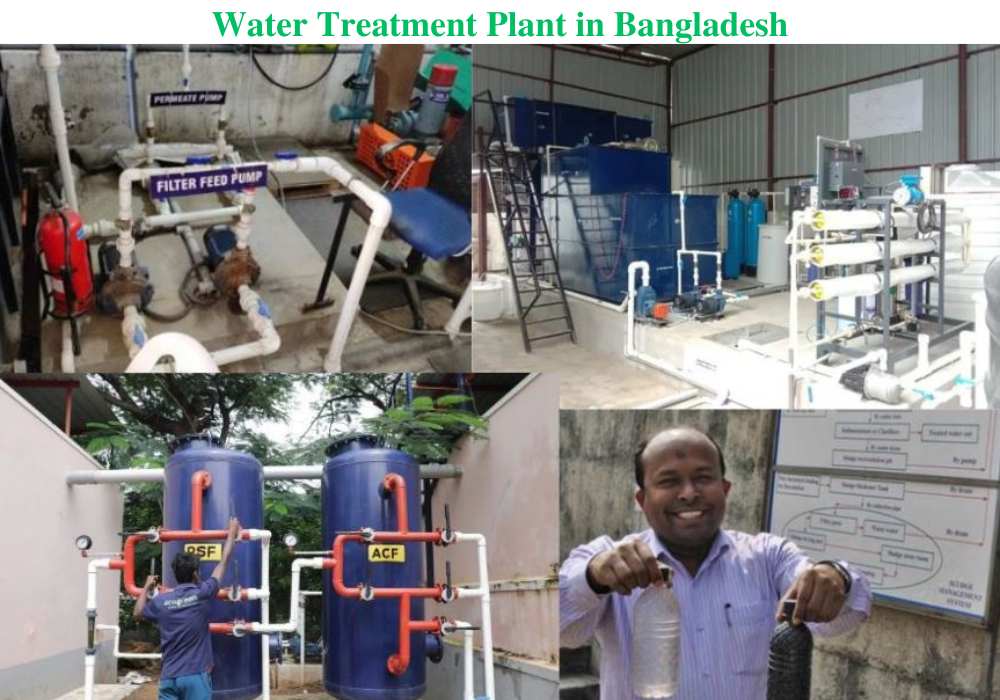Fully Automatic Water Treatment Plants in Bangladesh
Turning on your tap and knowing, with unwavering certainty, that the water gushing forth is a crystal-clear elixir of health. No murky doubts, no metallic twinges, just pure, refreshing H2O ready to quench your thirst and nourish your life. In Bangladesh, a land where water is both abundant and fraught with challenges, achieving this liquid nirvana is no longer a pipedream. Enter the fully automatic water treatment plant, a technological knight in shining armor ready to slay the dragons of contamination and leave your taps sparkling with confidence.

But wait, what exactly is a fully automatic water treatment plant? Think of it as a tiny, self-regulating city for your water. Raw water enters, meets a gauntlet of purification techniques like reverse osmosis filtration (RO), ultraviolet (UV) disinfection, and sand filtration, and emerges on the other side, a squeaky-clean citizen ready to contribute to your well-being. No more lugging buckets to communal wells, no more battling with temperamental manual systems. This is water treatment on autopilot, a silent guardian ensuring every drop that reaches your glass is fit for a king (or queen!).
So, why is this a game-changer for Bangladesh? Let’s paint a picture. Millions in this vibrant nation grapple with waterborne diseases like diarrhea, typhoid, and arsenic poisoning, often stemming from untreated or inadequately treated water. Iron-laden water turns clothes rusty and hair brittle, while hard water wreaks havoc on plumbing and appliances. But with a fully automatic plant by your side, these woes become distant memories. Arsenic removal technologies become your personal alchemists, transforming tainted water into liquid gold. Water softening systems become your gentle giants, leaving your skin soft and your pipes purring with contentment.
But Bangladesh isn’t just about homes; it’s a land of bustling businesses. Hotels, restaurants, hospitals – all need a steady flow of pure water to thrive. Imagine a hotel where guests can shower without fear of itchy skin, or a restaurant where the clinking of glasses echoes with the confidence of clean water. Swimming pool water treatment systems become your silent partners, ensuring sparkling leisure without the sting of chlorine. Wastewater treatment plants transform murky discharge into reusable resources, minimizing environmental impact and maximizing sustainability.
The benefits of these technological marvels extend far beyond the tap. Public health flourishes as waterborne diseases become a fading memory. Children skip school less due to illness, and businesses attract and retain customers with the promise of sparkling sanitation. The ripple effect reaches the very fabric of Bangladeshi society, weaving a tapestry of health, prosperity, and environmental consciousness.
Of course, no knight comes without a price tag. The cost of a fully automatic water treatment plant varies depending on size, technology, and brand. However, consider it an investment in your health, your livelihood, and your future. Government regulations for water treatment in Bangladesh are becoming increasingly stringent, and these plants ensure compliance with ease. Local water treatment companies offer a variety of options and financing solutions, making the dream of clean water more accessible than ever.
And let’s not forget the environmental impact. By harvesting rainwater and treating wastewater, these plants reduce dependence on stressed natural resources. Sustainable water management practices become the norm, leaving a legacy of environmental responsibility for generations to come.
In conclusion, a fully automatic water treatment plant is not just a machine; it’s a promise. A promise of health, of prosperity, of a future where every Bangladeshi can turn on the tap and drink with confidence. So, let’s embrace this technological revolution, one sparkling drop at a time. Let’s make “crystal clear confidence” the new national motto, and watch Bangladesh blossom into a land where water is not just a resource, but a symbol of hope and progress.
